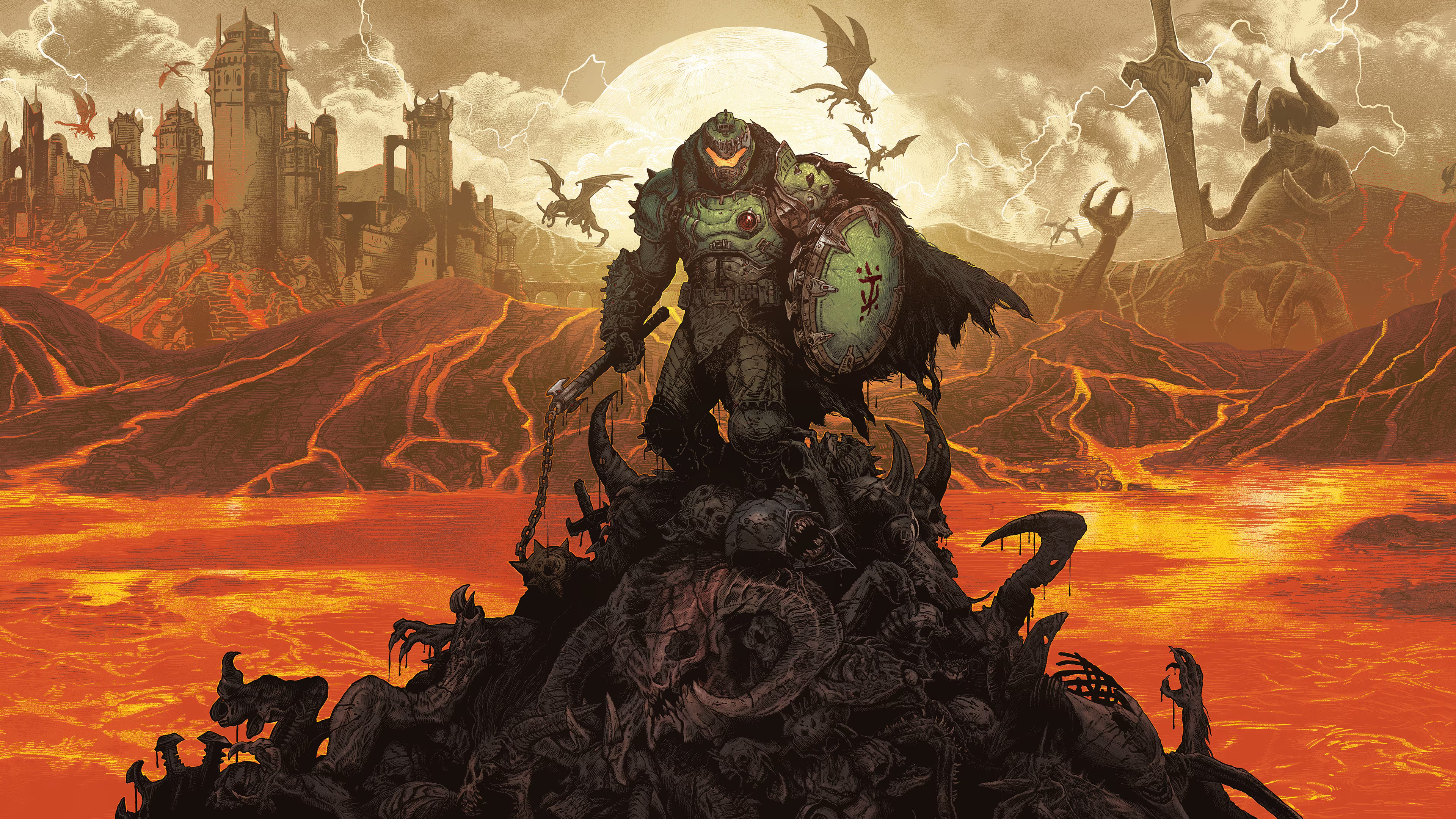The grandaddy of first-person shooters is back with Doom: The Dark Ages, the third entry in the rebooted series that players fell in love with, thanks to Doom (2016). id Software created a winning formula of over-the-top violence and satisfying gunplay against Hell’s demons, and since then haven’t settled on comfortable familiarity. 2016’s sequel, Doom Eternal, took the near-perfect gameplay and dialled it up to 11, as the focus became the Slayer’s manoeuvrability, weapon swapping and, of course, even more Glory Kills.
Doom: The Dark Ages, then, is another pivot for the franchise. Instead of ammo management, seamless traversal across the levels, evading enemy fire and tearing a demon’s jaw off its face, I am now standing feet firm on the ground with a shield raised and my flail dripping in demon brains. The game is a prequel, set before the events of the past two games, so whilst The Dark Ages is the literal time and place, the gameplay can be described as such too.
That’s not to say that this change is bad, far from it. However, there is something archaic and primal about how this entry operates. The Doom Slayer finally feels like that unstoppable force meeting an immovable object. Destined to fight Hell forever, being that said immovable object, the Slayer rips and tears right through it, like the force we’ve only been able to imagine until now.
Into The Darkness
In an early moment of the game, I was atop a hill looking down at the demons trying to take over the human world. Like second nature, I jumped from the hill onto the battlefield, and as the Slayer met the ground, a shockwave bellowed through my headphones, obliterating the demons nearby. This isn’t a scripted moment, but one you can repeat throughout the game.
It showcases the heft of this more visceral version of the Doom Slayer. Every footstep is met with a crunching thud on the ground; instead of evading gunfire, I’m parrying the incoming bullets. To close the distance between the demons, I’m no longer double jumping and dashing but shield-bashing towards them, either making them explode or temporarily stunned.
It’s a whole new flavour of power fantasy that I came to absolutely love. The Shield is the biggest factor in this more “stand and fight” style of gameplay, as id Software have described it. I’ve already mentioned that you can parry and shield bash, but it also allows you to generally block attacks and bullets, as well as throw it like a boomerang of death.
Couple this with the new arsenal for the Slayer, and you’ve got a weighty and impactful combat system. There are some weapon staples given the medieval treatment like the Shotguns, plasma rifles, even a version of the BFG. But the new additions here, like the Pulverizer, a fast and wide firing weapon that uses crushed skulls as its ammo, or the Chainshot that fires a metal ball on a chain, causing flesh to fly off demons, further add to the heavy metal imagery the Doom series is known for in such a satisfying way.
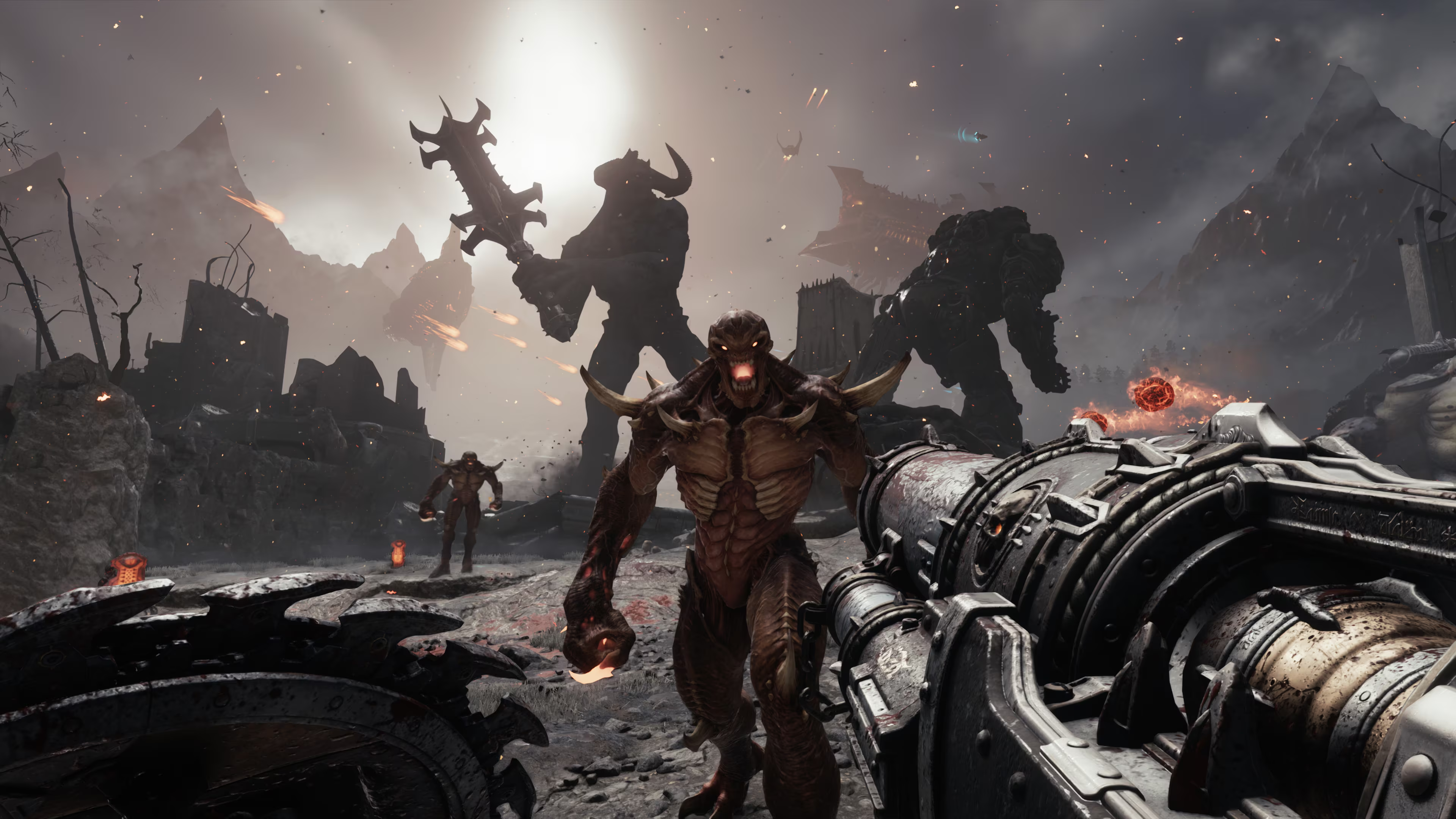
Bloodlust
Ammo is in abundance, and replenishing it is easy if you familiarise yourself with the shield and melee, so you can stick to the weapons you like this time around. Feeling like this dominating force lends itself to Doom: The Dark Ages new approach to level design. Whilst there’s still the tight hallways and mid-sized rooms of bullets flying every which way, The Dark Ages also features more open levels to fight through.
These open levels are sprawling battlefields that’ll have a few objectives you’ll need to complete in any order you like. Between these objectives are pockets of demons that’ll spawn in abundance, creating dynamic combat scenarios. The number of demons you’ll face all at once has doubled, with more of the bigger enemies spawning together. Demon types that were set pieces in previous games are now just sprinkled in to keep you on your toes.
Cyberdemons mixed in with Macubuses and Hell Knights are a common occurrence, which felt overwhelming at first. However, unlocking more abilities for my weapons by spending Gold and Rubys you’ll find out in the levels, made it more than manageable. Every enemy will have attacks that’ll highlight green, which means they are parryable, so whilst dodging bullets and firing back is still doable, you’re incentivised to face the onslaught head-on.
The one glaring omission is the Glory Kills. They’ve been replaced by a simple melee finisher that’ll drop health, shield and ammo. Whilst I miss the over-the-top gory theatrics of the Glory Kills, this new approach keeps the pacing of each combat encounter up, giving you less time to stop and smell the burning flesh and more time shield-bashing across an entire arena to take on the next demon.
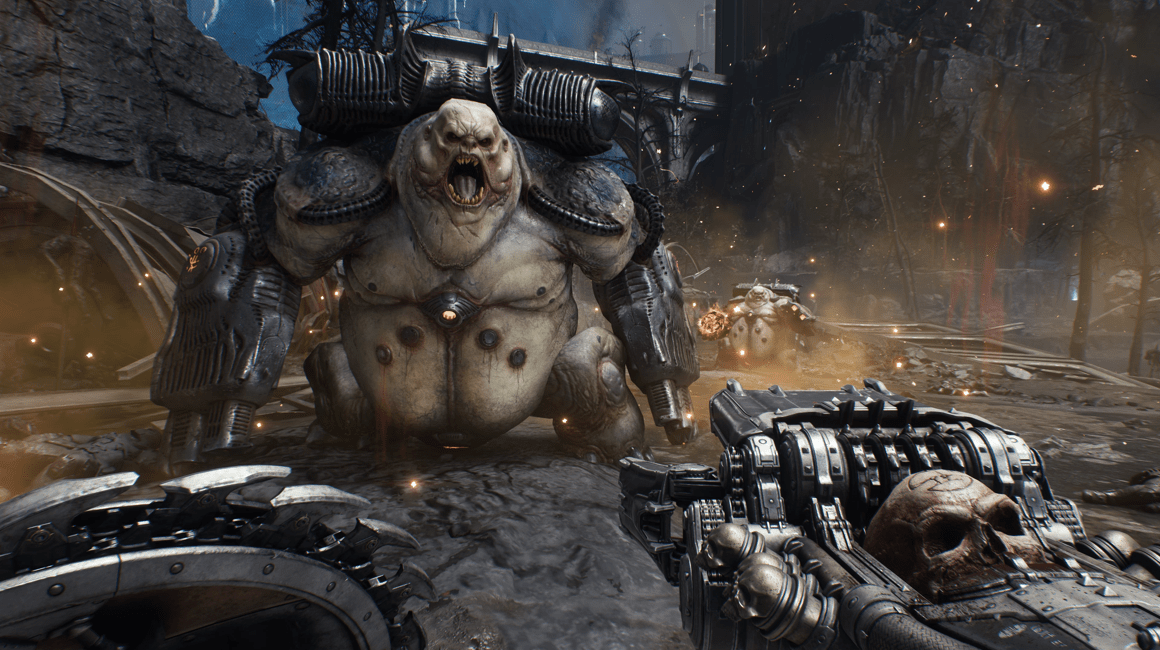
Giving ‘Em Hell
It’s an adjustment, to say the least, and one that feels less vertical, kind of like how OG Doom was, but I fully believe that the combat has never been so satisfying, despite what I miss from the previous two entries. It also doesn’t help that it takes a good 10 or so levels before all of your abilities are given to you. For context, there are 22 levels, meaning you don’t get Shield Runes till about halfway into the game, which is arguably one of the biggest game changers for Doom: The Dark Ages.
Shield Runes are an equipable buff to your shield that, once activated through parrying a bullet, can either electrify the surrounding enemies, send holy swords pummelling towards them or send a shockwave through the ground and stunning them. Mix this in with the shield’s other capabilities as well as your upgraded weaponry, and you feel like a devastating force to be reckoned with – it just takes 6-8 hours until you get there.
I know video games be video games and that gradual progression is inherent, but they usually feel like additions to an already solid framework, not something you’ve been missing from the start of the game. This, paired with a shaky start in terms of the game’s new focus on storytelling, alongside some different gameplay moments (which I’ll get into), gives off a less-than-stellar first impression. Thankfully, Doom: The Dark Ages’ gameplay at its least interesting is still fun enough to get to the even better parts, but it’s a fairly long road before getting to it.
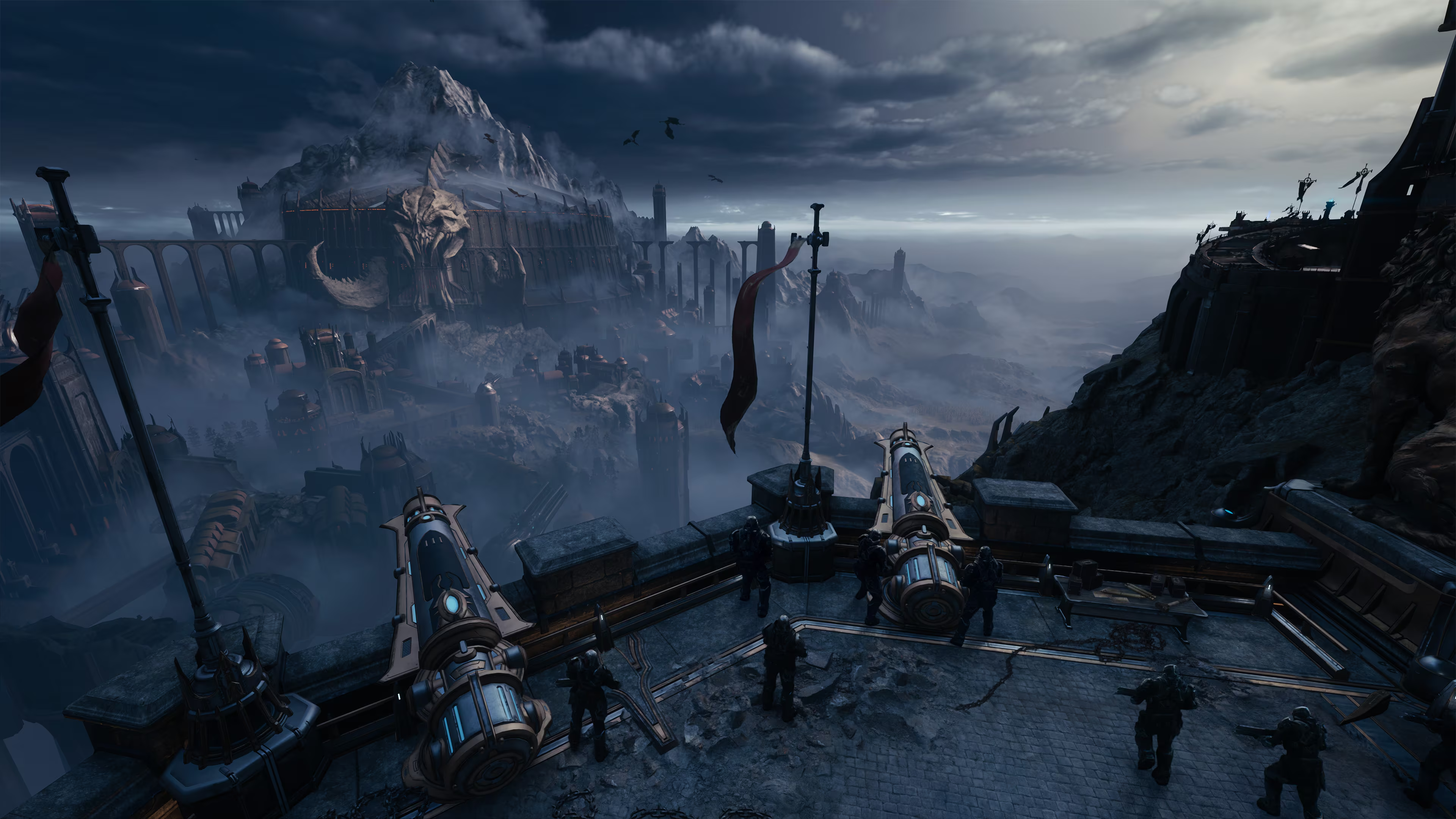
One For The Ages
The story takes place before the events of the previous two games, where war is ongoing between Hell and Argent D’nur. The Doom Slayer is the final bastion for the Night Sentinels and their allies, the Makyrs, as he’s deployed by them when things are taking a turn for the worse. The antagonist of The Dark Ages, Prince Ahzrak, lord of Hell, is looking for the Heart of Argent, an all-powerful artefact that’ll give him the strength to not only take over Argent D’nur, but everywhere in the living world.
This is supposedly what bridges the gap between Doom 64 and answers some of the questions in Doom Eternal’s DLC, The Ancient Gods. However, if you’re not familiar, I don’t blame you because I wasn’t either. The cut scenes quickly get into the characters and setting and the hierarchy of them all, but it never goes beyond what was happening in the moment. Context was flimsy and I couldn’t help but not pay much attention because at the end of the day, I was Doom Slayer, killing demons and having fun doing so.
Much like the gameplay, though, it really opens up in the last third. Doom: The Dark Ages took an unexpected cosmic turn I didn’t see coming, and with that, provided some of the best settings I’ve slayed demons in for the franchise. I won’t elaborate much more because the fun is the surprising twists this game gets into, but it made the story way more interesting, formed new puzzles in the levels, which were far more engaging than some of the earlier ones, as well as adding some new demons to face in the midst.
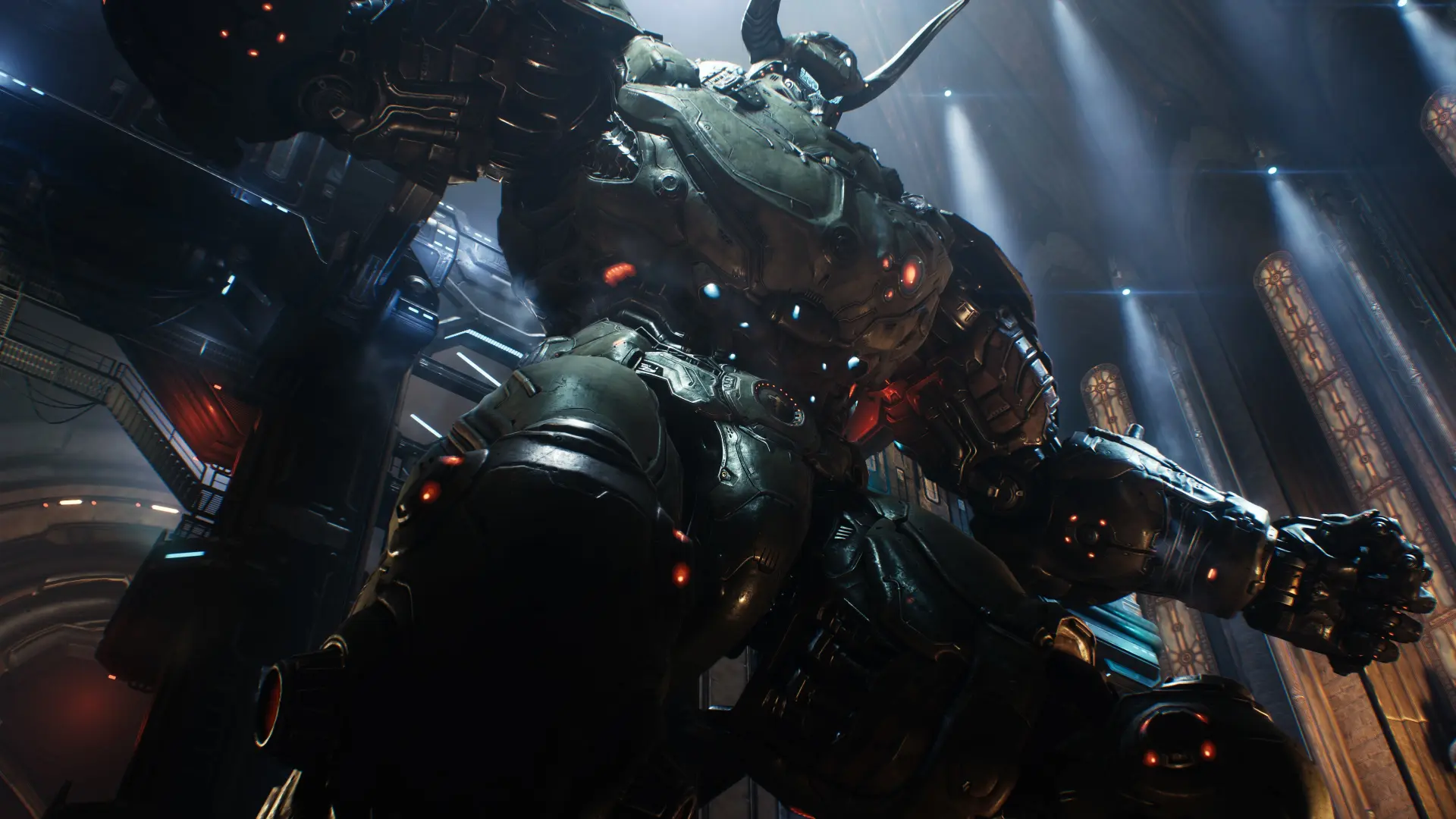
No Evangelion
Also new to this entry are levels that feature mech suit fights and flying dragons. On paper, this sounds awesome and befitting of the dark tech fantasy setting that The Dark Ages has, but I’m a little bit mixed on how they’re implemented. These moments are few and far between, so like them or hate them, there’s very little time spent on them regardless, and I overall appreciate the change-up in gameplay that they provide.
With that said, they’re very rudimentary in execution. The mech suit has an attack, a dodge, and a special attack once you build up a metre from doing both of the former things. It’s simplistic in design and doesn’t provide much more than it looks cool in a Pacific Rim but Hell kind of way. The dragon has a similar problem where it’s very basic in execution, but it does make some of the levels you’re put into huge, as you ride from point to point and step off the dragon to do some of the level on foot seamlessly.
These are somewhat welcome additions as it adds to the variety, but they could have felt more engaging to do. Often moments like these are ones in other games that I long to experience again, because of how fun they are, but in Doom: The Dark Ages, I could’ve played each scenario once and wouldn’t have missed them if they didn’t show up again. They do, however, present a visual spectacle, which the game has in spades.

We’re All Doomed
Whether it’s the tech meets medieval architecture in disarray from Hell’s assault, the revamped aesthetics of the demons themselves that have a steampunk-y look to them, the trecherous landscape of Hell with 50ft tall demons hung up on a cross and flames burning fiercly anywhere that wasn’t solid ground, or the more cosmic horror elements injected near the end, it’s all the most metal Doom has ever looked.
There’s no visual options like Quality or Performance for PS5, only a HDR menu to adjust some sliders for it. Though I don’t think it matters as the game generally looks great. It runs at at least 60fps consistently, maybe even higher, and whilst it might not look as high fidedilty on PC, it’s not a standard of visuals to scoff at. The only main discprencies I saw were the human characters looking closer to last gen, as well as colours maybe looking a bit muted in some of the earlier sections.
Outside of that, the art direction in Doom: The Dark Ages is one I hope continues moving forward. The game feels like it’s going all out on just how unserious but effortlessly cool the ethos of Doom is as a franchise. Everything’s exaggerated, everything in the world is super serious but at the end of the day, you’re shooting demons into pieces to metal music. But how is the metal music, might you ask? Well…
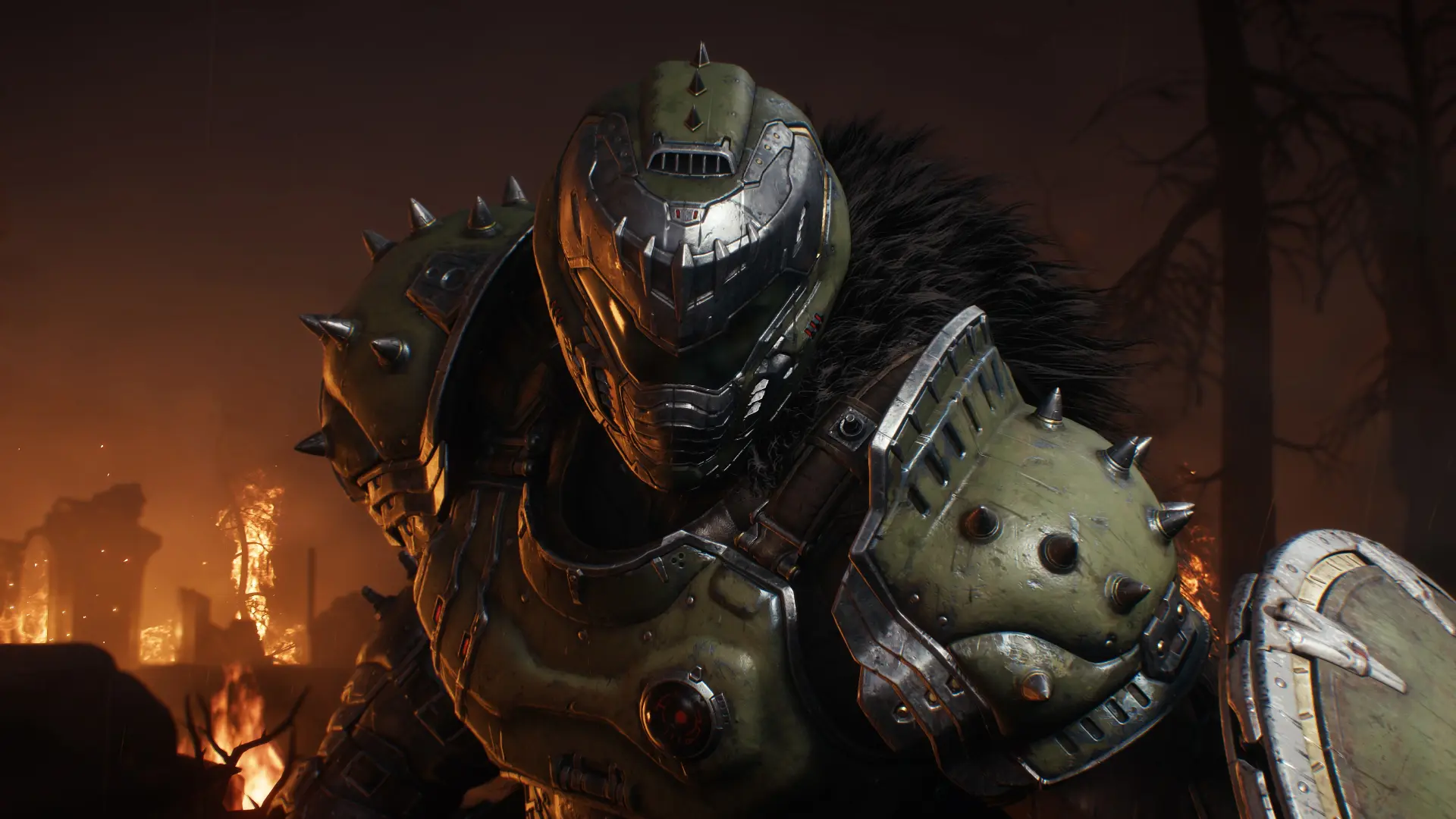
Raining Blood
Long story, short, Mick Gordon hasn’t returned to create the soundtrack for Doom: The Dark Ages, despite creating impeccable soundtracks for the previous two entries. This isn’t for me to explain in the review, you can do your own digging, but his presence is sorely missed here. The soundtrack certainly apes what the previous games have sounded like, but it’s nowhere near as memorable here.
The game by default also has the music quieter and more mixed into the diegetic ambience of the levels, which I immediately turned it up to hear slightly above everything else. I can see why though, there’s not those showstopping riffs and pulsating double base pedals I remembered from before. Instead, we’ve got something a little more servicable in the same style.
It’s also a soundtrack that has its better songs near the end of the game, a running trend for this entry. From about mission 15 onwards, I was feeling what was initially missing from the game. Memorable guitar chugs that heightened my sense of badassery as I was obliterating demons with my whole arsenal. I guess thematically and story wise there’s a reason we have different motifs and music as we go to other places, but the best of anything shouldn’t be tucked behind the halfway mark, and that’s what Doom: The Dark Ages has done with everything.
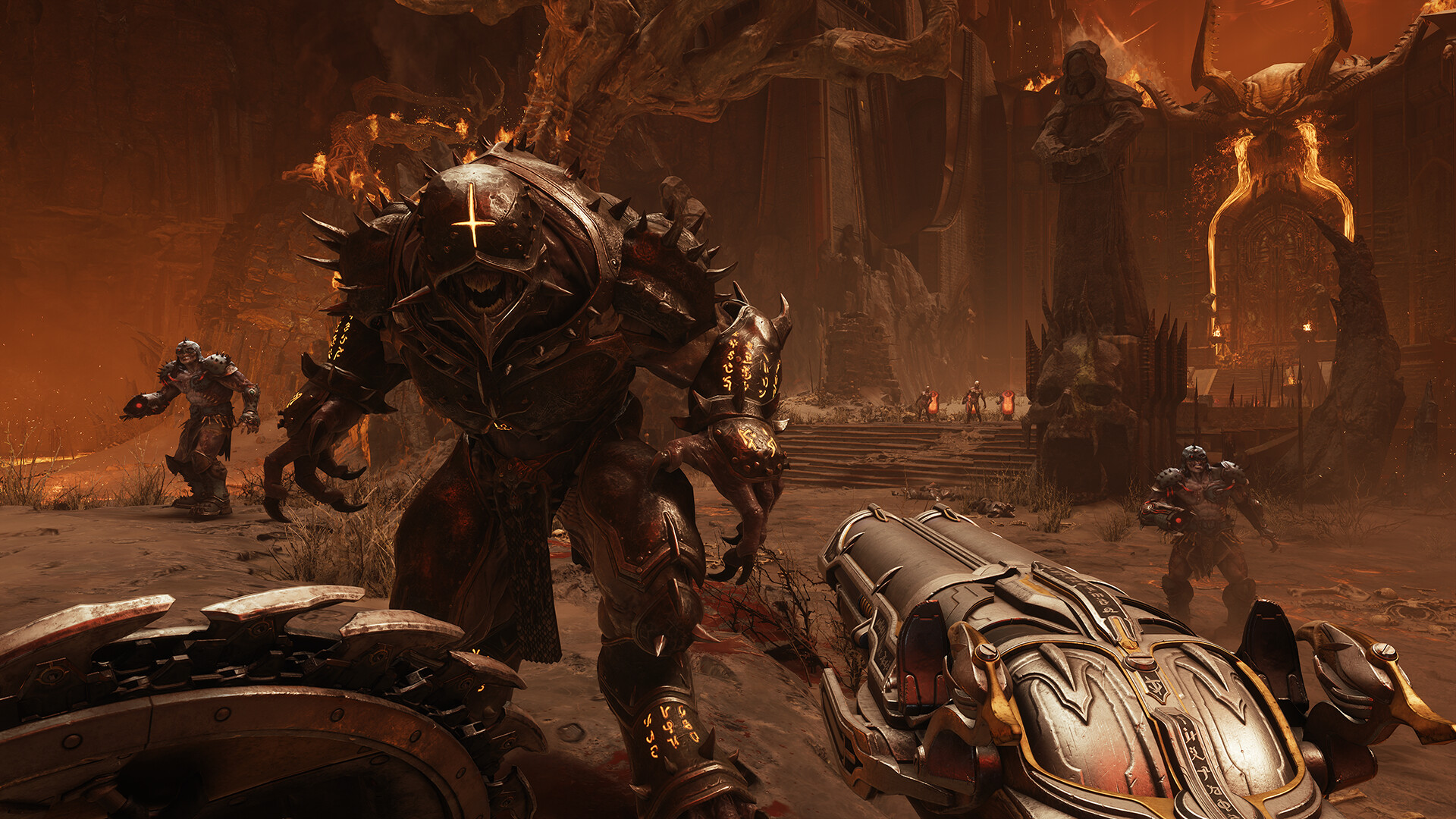
Eternal Hell
Don’t get me wrong, The Dark Ages is clearly head and shoulders above contemparies in the genre, even with what I feel are some of the low points for the game. But if you’re comparing it to the previous outputs, which were consistent throughout, I feel nitpicking is required here. Had this game started from mission 12 out of 22, I’d be saying this is my favourite out of the three by now.
Once I got into the gunplay, I was hooked without how delightfully brutal it was; the levels are some of the most interesting I’ve seen too with its open plan approach. I also think Doom: The Dark Ages has the best look of the three, but it can’t escape that it has a slow start, with a bigger focus on story and cut scenes that I generally didn’t care for.
Overall, I’m just glad id Software didn’t settle on a winning formula from Doom (2016) and just tried to replicate it. It’s not often you get AAA budget games, especially franchises, that are willing to challenge player expectations. The Dark Ages is a distinct departure, one that for the most part is cooler aesthetically and gameplay design wise that in its predecessors, just not every choice was the right one. I could see this go down as being people’s favourites, and maybe in time it’ll be mine too.
Doom: The Dark Ages is out now for PlayStation 5 (review platform), Xbox and PC via Steam.
Developers: id Software
Publisher: Bethesda Softworks
Disclaimer: In order to complete this review, we were provided with a promotional copy of the game. For our full review policy, please go here.
If you enjoyed this article or any more of our content, please consider our Patreon.
Make sure to follow Finger Guns on our social channels. Twitter, Facebook, Twitch, Spotify or Apple Podcasts – to keep up to date on our news, reviews and features.
